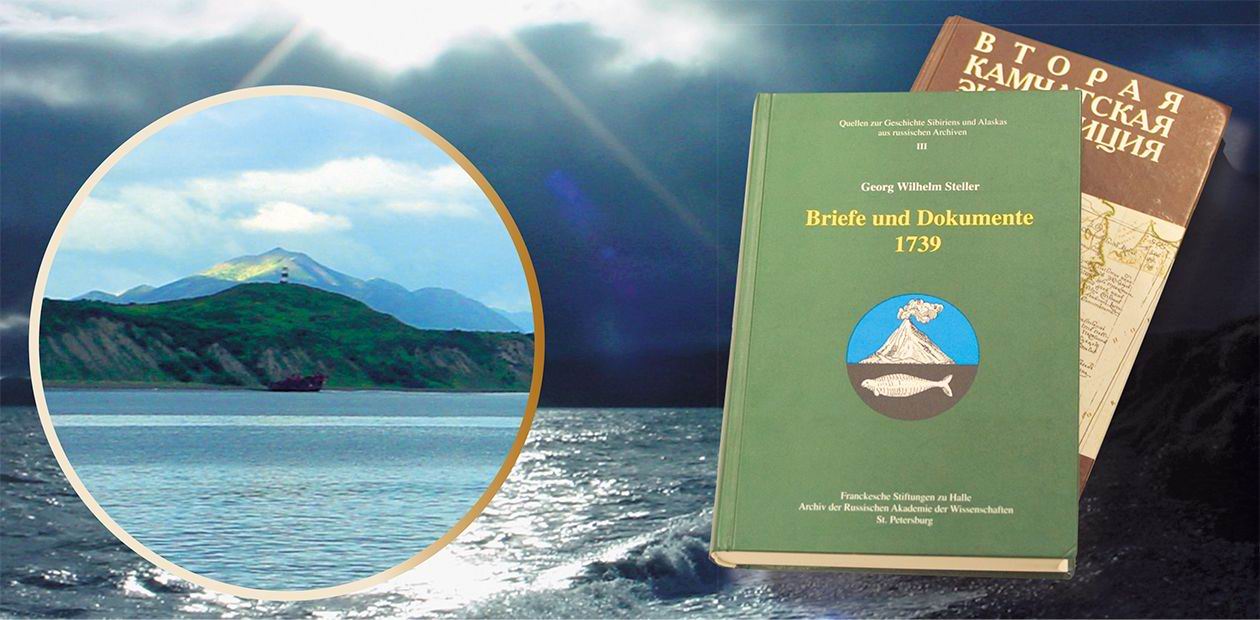The Second Kamchatka Expedition is a Heroic Scientific Act of the 18th Century
Russian history-lovers are practically unfamiliar with the name of Gerhard Friedrich Mueller or Gerard Friedrich Miller, as he called himself in Russia. Even if they heard of the name, it was more likely in connection with M. V. Lomonosov’s struggle against the so-called “Norse” theory of origin of the state in Ancient Russia, one of whose founders was Mueller. In 2005, the international scientific community celebrated the third centennial of the birth of the German scientist on a large scale. Does it mean that his accomplishments are worthy of this? The question is more than appropriate. It is high time that we got rid of historical clichs that have proved unable to stand the test of time and started revising the views on the great German who has done much for the formation and development of Russian science.
Mueller’s participation in the Second Kamchatka expedition as an informal leader of the Academic Detachment during the journey across Siberia in 1733—1743 was the most important milestone in the scientist’s destiny. Mueller visited all the districts of the Urals and Siberia, studied the archives of the cities he visited, and in ten years of travel accumulated a vast file of valuable materials on the history, economy, geography, demography, archeology, ethnography, and languages of Siberian peoples…
A publication project on Siberian history
In the beginning of the 18th century the town of Halle was one of the first centres of Russian studies in Germany. Many contacts linked the University of Halle with the Russian Academy of Sciences. Theologian and linguist August Hermann Francke (1663-1727) built up orphanages and schools, and the Francke Foundation financed by selling medicines, a printing-office, a bookstore, an editing-house, and estates. Influenced by the ideas of early Enlightenment, Francke developed an outstanding educational system which attracted people from all over the world, among them Peter I. In Russia, with Francke’s help schools were founded, for instance, in the towns of Narwa, Alp, Astrakhan and Tobolsk, the latter being the first school in Siberia.
One of the teachers in the schools of the Francke Foundation was Georg Wilhelm Steller, who later became one of the participants of the Second Kamchatka Expedition.
In 1992, a small group of scientists in Halle began studying German-Russian scientific cooperation in the 18th century, especially the work and scientific results of the group sent by the Russian Academy of Sciences to the Second Kamchatka Expedition. With the help of many institutions and museums in Russia and other countries, an exhibition was organized in Halle in 1996 to commemorate the life and work of Georg Wilhelm Steller. The first International Steller Conference was held the same year in Halle to give new insights into the importance of the historic research of the work done by the participants of the Second Kamchatka Expedition for scientists working today in geography, geology, botany, zoology, and ethnology of Siberia and Russia. From this, the idea arose to start a publication series, to be issued simultaneously in Russia and in Germany by the Francke Foundation and Archives of the Russian Academy of Sciences of St. Petersburg, which would mainly focus on yet unpublished documents and manuscripts of the Second Kamchatka expedition. A cooperation network was formed in which many institutions from Russia, Germany, Denmark, the USA and other countries participated. Today, in the series “Quellen zur Geschichte Sibiriens und Alaskas aus russischen Archiven” (Sources of the history of Siberia and Alaska from Russian archives) the following volumes have been published: Vol. I. Letters and documents by Georg Wilhelm Steller from 1740 (German and Russian edition), Vol. II. Travel journals and geographical descriptions by Georg Wilhelm Steller, Stepan Krasheninnikov and Johann Eberhard Fischer, 1735-1743 (German edition), Vol. III. Letters and documents by Georg Wilhelm Steller 1739 (German edition) and Vol. IV, part 1. Documents of the Second Kamchatka Expedition, 1730-1733 – Navy Detachments (Russian edition). Volume IV, part 2. Documents of the Second Kamchatka Expedition, 1730-1733, Academic Detachment (German edition). Volume V. Documents of the Second Kamchatka Expedition: January — June 1734, Academic Detachment (German edition).
Work is now in progress on a few next volumes of the series. Among those is Flora Irkutiensis by Georg Wilhelm Steller. This is the earliest scientific description of the flora of the Baikal and Trans-Baikal region. In the year 1739, Steller decribed more than 1,150 plants of the regions, among them many new species. One volume presents geographical descriptions of the Krasnoyarsk-Yeniseisk-Irkutsk regions by G. W. Steller, Johann Georg Gmelin, Gerhard Friedrich Mueller and Johann Eberhard Fischer. Another book being prepared for publication is Steller’s travel journal embracing the period from his departure from St. Petersburg in 1737 to his arrival in Yeniseisk. This travel journal has been believed missing since the 18th century but was found several years ago by Dr. W. Hintzsche in Petersburg. The American zoologist Leonhard Stejneger wrote about this travel journal in his famous Steller biography in 1936: “During his long voyage from St. Petersburg to Okhotsk, which took nearly three years to accomplish, Steller kept a diary (Itinerarium und Journal von St. Petersburg bis nach Kamtschatka, Journal von St. Petersburg bis Kamtschatka), which unfortunately has been lost. If it had been kept with anything like the detail and zest with which he wrote his Tagebuch seiner Seereise, what a wonderful commentary we would have on the people and conditions during the time of the Second Kamtchatka Expedition!”.
A publication of the ethnological manuscripts by Gerhard Friedrich Mueller in at least two volumes is now being prepared jointly by Dr. A. Elert (Novosibirsk) and Dr. W. Hintzsche (Halle). In his manuscripts Mueller gave detailed descriptions of the Siberian peoples. He developed ideas for a universal description of peoples and regarded his own works as the first step to such a description. After publication of Mueller’s ethnological manuscripts, priorities in the history of ethnology will have to be re-set: it may turn out that it was founded not by August Wilhelm Schlezerbut but by G. F. Mueller, some 30 years earlier. The first volume of this work, which contains The Description of Siberian Peoples by Mueller, is being published.
The main institutions in this cooperation project are the Archives of the Academy of Sciences of St. Petersburg, the Institute of History of the Siberian Branch of the Russian Academy of Sciences, Novosibirsk, the Slavonic Institute of the University of Aarhus (Denmark) and the Francke Foundation in Halle (Germany).
In 2005, the international academic community held a sweeping celebration (spreading from Halle to Yakutsk) of the 300th anniversary of the “father of Siberian historiography” G. F. Mueller. In 2009, a series of conferences and symposia dedicated to the 300th anniversary of G. W. Steller and J. G. Gmelin are planned to be held in Russia and Germany. An active part in the preparation of these events is played by the International Society of Georg Wilhelm Steller set up in 2007, whose President is the old friend of Russia and Russian scholars concerned with research into the Second Kamchatka Expedition Doctor Elizabeth Hintzche.











